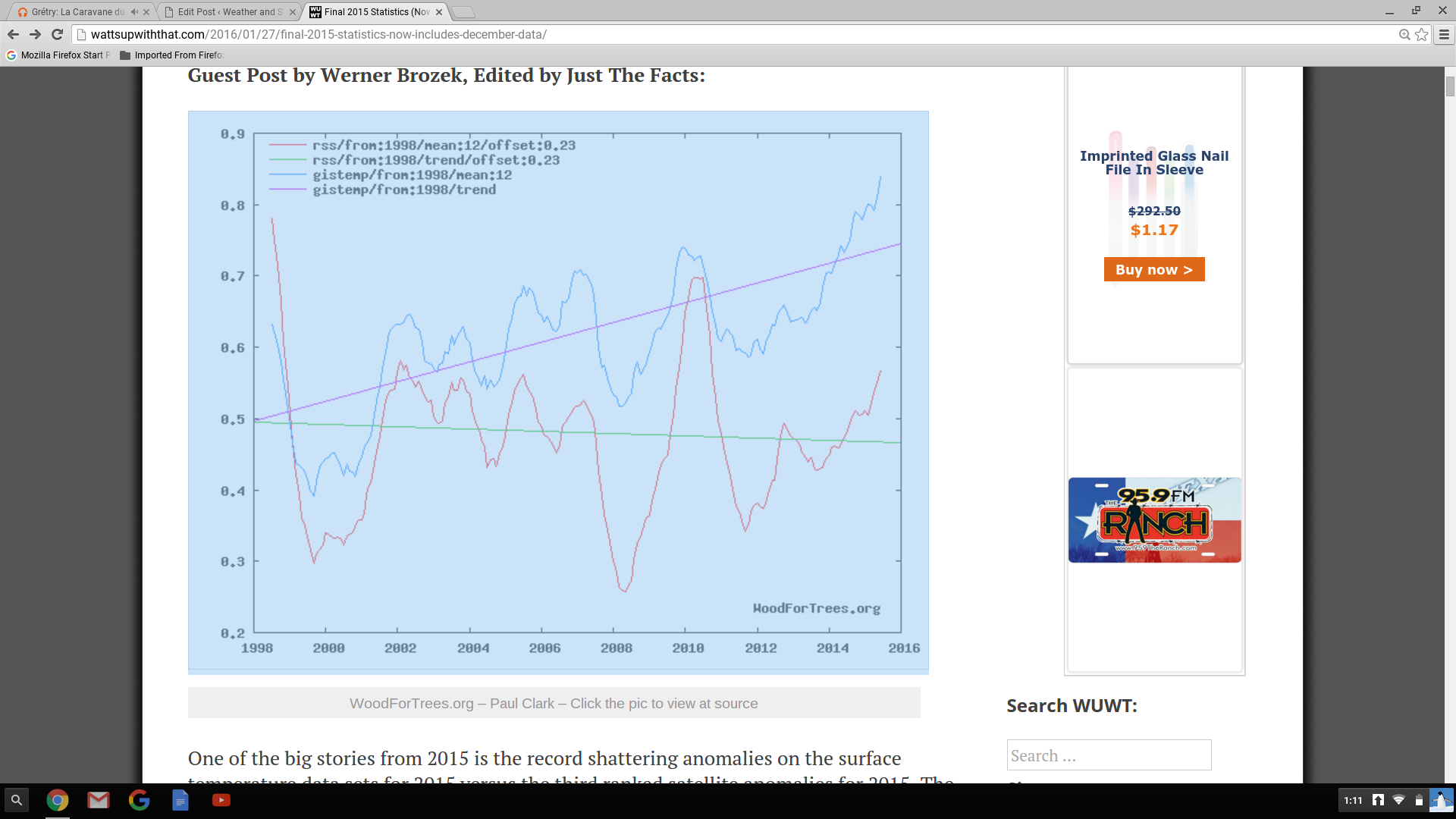Monday, 1/24/16
Such arrogance
I saw in Saturday’s paper that the National Weather Service, in commenting on Friday’s (lack of) snow, said that the storm had “underachieved.” I was dumbfounded! They didn’t blame the lack of snow on a bad forecast (it was) or on the “models” (they did a pretty good job). Rather, they blamed the lack of snow on…nature itself! Nature doesn’t make mistakes, it always does what the physical laws dictate. So, what happened was EXACTLY what nature intended. The storm neither “underachieved nor “overachieved.” It achieved exactly what it was supposed to. When you look at the snow left behind over the eastern U.S., it is hard to say the storm “underachieved.”
Unfortunately, such arrogance runs rampant through many of our government science-oriented agencies. From NOAA, NASA, EPA and all the way up to our scientifically gullible President the thought exists that we (mankind) have to stop nature RIGHT NOW! If we don’t, the planet is going to kill us all. Nonsense!!! Who’s to say what the Earth’s average temperature should be? Our climate always changes, has been for millions of years. Warm spells, ice ages…it hasn’t mattered. Life goes one, but it, too, changes. Estimates suggest that about 97-98% of all the species that have developed on Earth are now extinct. (Anybody ever hear of a man named Darwin?) In more recent times, we believe Earth was warmer than now around Biblical times and again for 300-400 years centered around 1050. Then we had the “little Ice Age” which ended in the mid 1800’s. Since then, we’ve had an irregular, slow warming. Over the past 100,000’s of years, what have humans done to survive? They have adapted to the changing climate. Or, perhaps a better word to use is (one of my favorites) ACCLIMATIZED. They have adjusted to the changes in climate. Now, all of a sudden, that won’t work! We, as the human race, must stop nature in its tracks! Our governmental gods say it can be done and have told us how. They seem to think that we won’t notice if our economy is destroyed and our life style is set back about 100 years, or so. Such arrogance!
We’ve already wasted trillions of dollars for projects that have given very limited results. Solar and wind can generate power, but at a cost two to ten times higher than traditional power. (Your tax dollars are paying for that illogical economics.) Plus, wind and solar need backup “traditional” power supplies because that have “down” times – night and calm winds. A far, far better use of all that money would have been to rebuild/improve our nation’s infrastructure. But, no, say our leaders, we can stop nature. Good luck with that.
But, a happier note (maybe)
Although we humans have greatly altered and changed nature in our time on Earth, nature doesn’t really care. It just follows the new rules and keeps on going. The current El Nino has warmed Earth this past 6 months and will ease only slowly over the next 6-9 months. Meteorologists who study Earth’s climate have studied and observed how climate has shorter term cycles in the weather/climate cycle that the current scare- mongering climatologists ignore. They say the items are insignificant and are not included in any of the climate models predicting doom and gloom.
Many meteorologists (myself included) believe that plots of two of the items show a much higher correlation to reality than any climate computer model currently used. Based on these items (ocean currents- major and sunspots- minor), we believe that Earth’s temperatures are due for a return to cooler temperatures after the current El Nino ends (late spring). The ocean currents and low sunspot numbers, we believe, will provide a cooler Earth for the next 10 to 20 years
Just can’t let this go by…
From yesterday’s CJ…Charles Barkley on Chicago Bulls’ Jimmy Butler…
“Other than LeBron James, he’s been the second-best player in the Eastern Conference all year.”
(As a person who made a living ad-libing, I know how easily this can happen.)

